LED test / review
Lumileds Luxeon Rebel Display
LXML-PWD9
Several months ago I got very cheap flashlights with a widely unknown LED in it. After some extensive searching I got the type of this emitter and also a kind of ‚official‘ datasheet. It was released sometime in 2012, before Cree showed the SC5 based LED series (XP-E2, -G2) to the public.
Now I will test this emitter up to it‘s maximum and give everyone who looking for this emitter the opportunity to check all values and important informations in one single post.
Tj 25 °C / If 350 mA unless noted otherwise
Order code: LXML-PWD9
Type: Flip Chip
Binning: ---
Rated voltage: typ. 2.84 V (min. 2.55 V, max. 3.25 V)
Forward current (Tj 150 °C): 1,000 mA
Surge current (120 Hz, 60 % duty): 1,200 mA
Viewing angle: ---
Chomaticity coordinates acc. to CIE1931: typ. Cx 0.280 / Cy 0.290
Thermal resistance: typ. 8.5 °C/W
Junction temp.: max 150 °C
Unless many other LEDs this emitter features a 3030 size (3.00 x 3.00 mm) and a unique footprint, similar to the bigger rectangular 'classic' Luxeon Rebel.. The LES area was built in Flip Chip design so no bonding wires are needed for connecting the die. In general there are many similarities between this and earlier Luxeon Rebel, except the package outline and PCB layout.
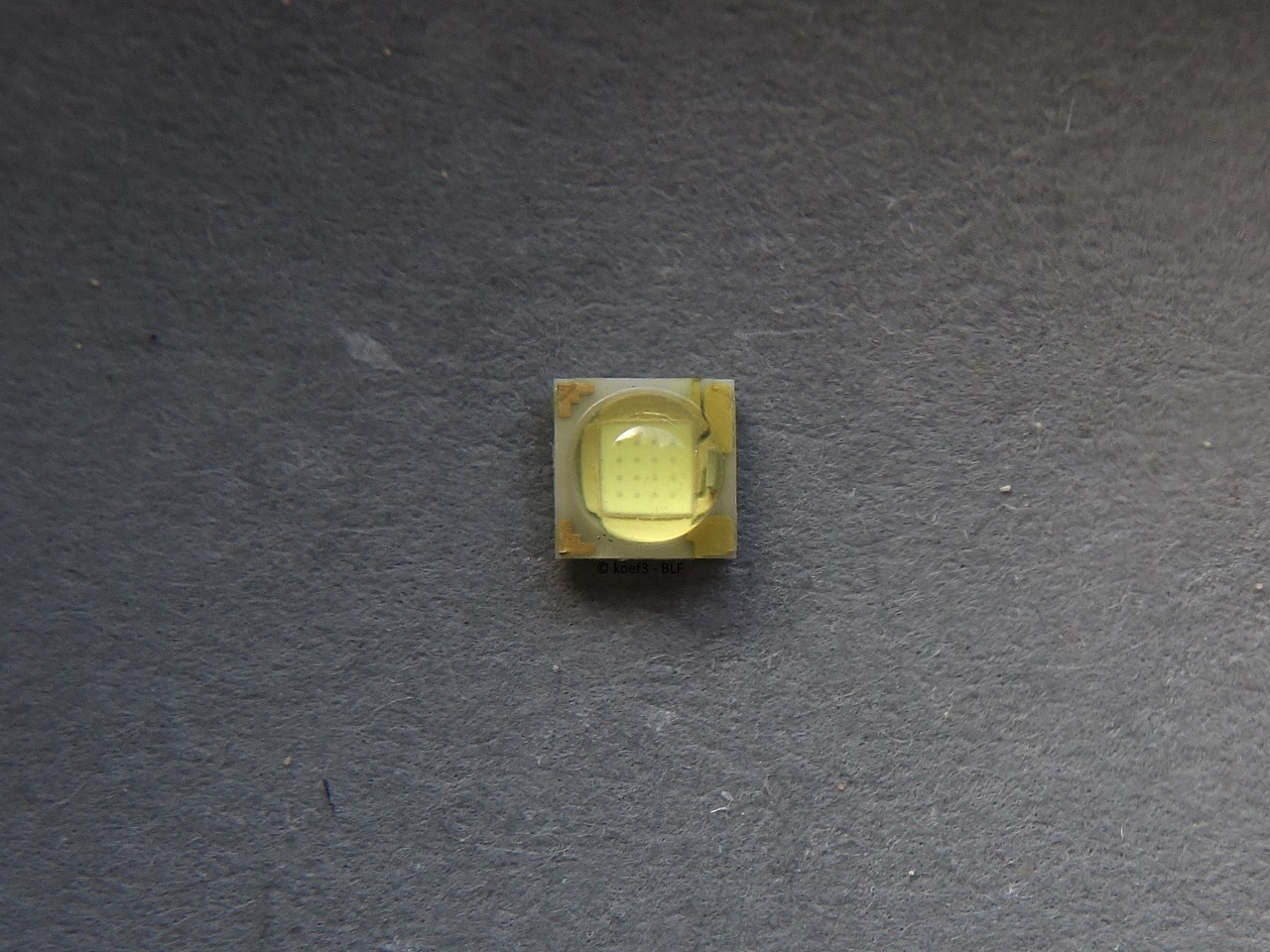

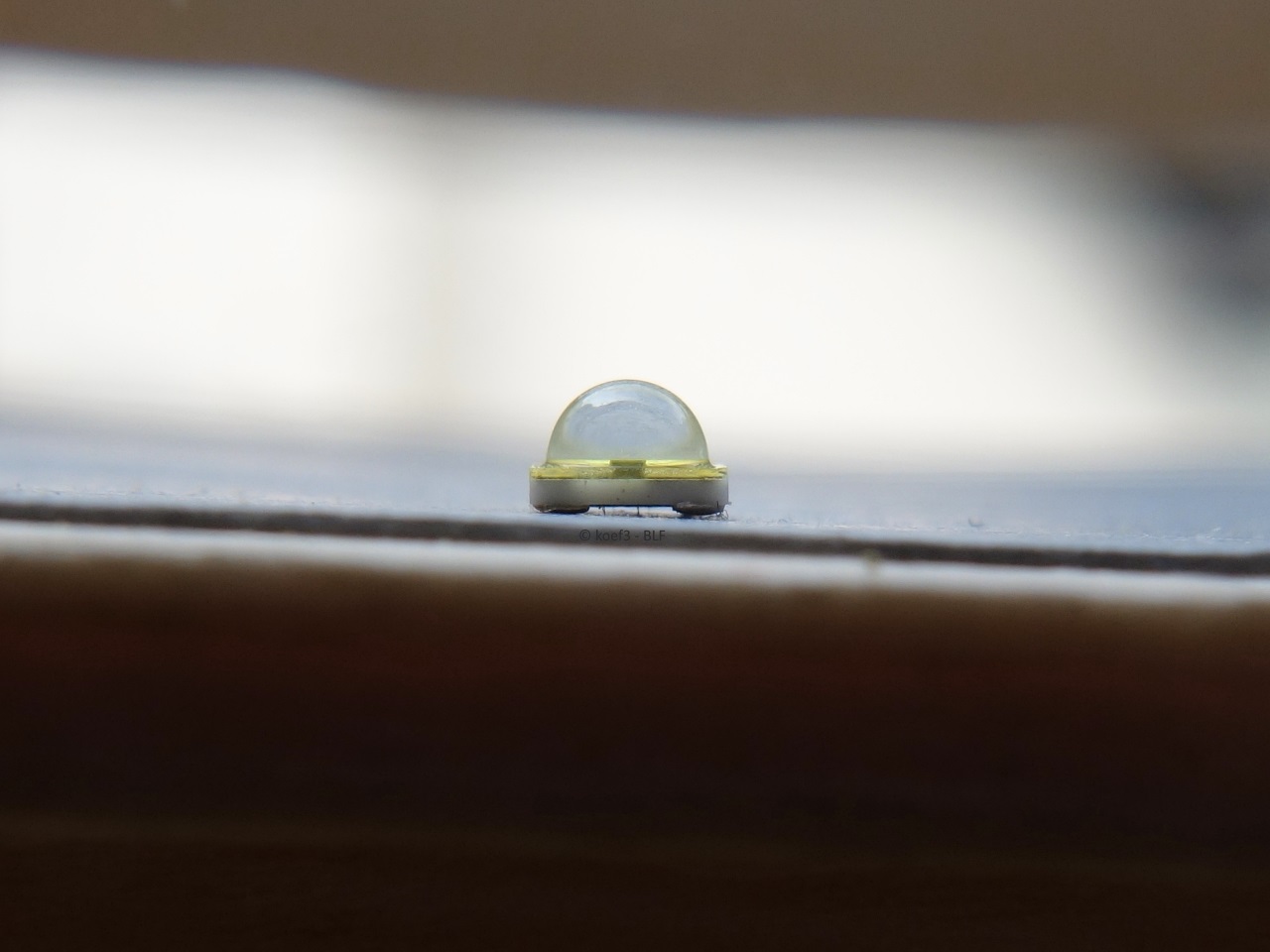
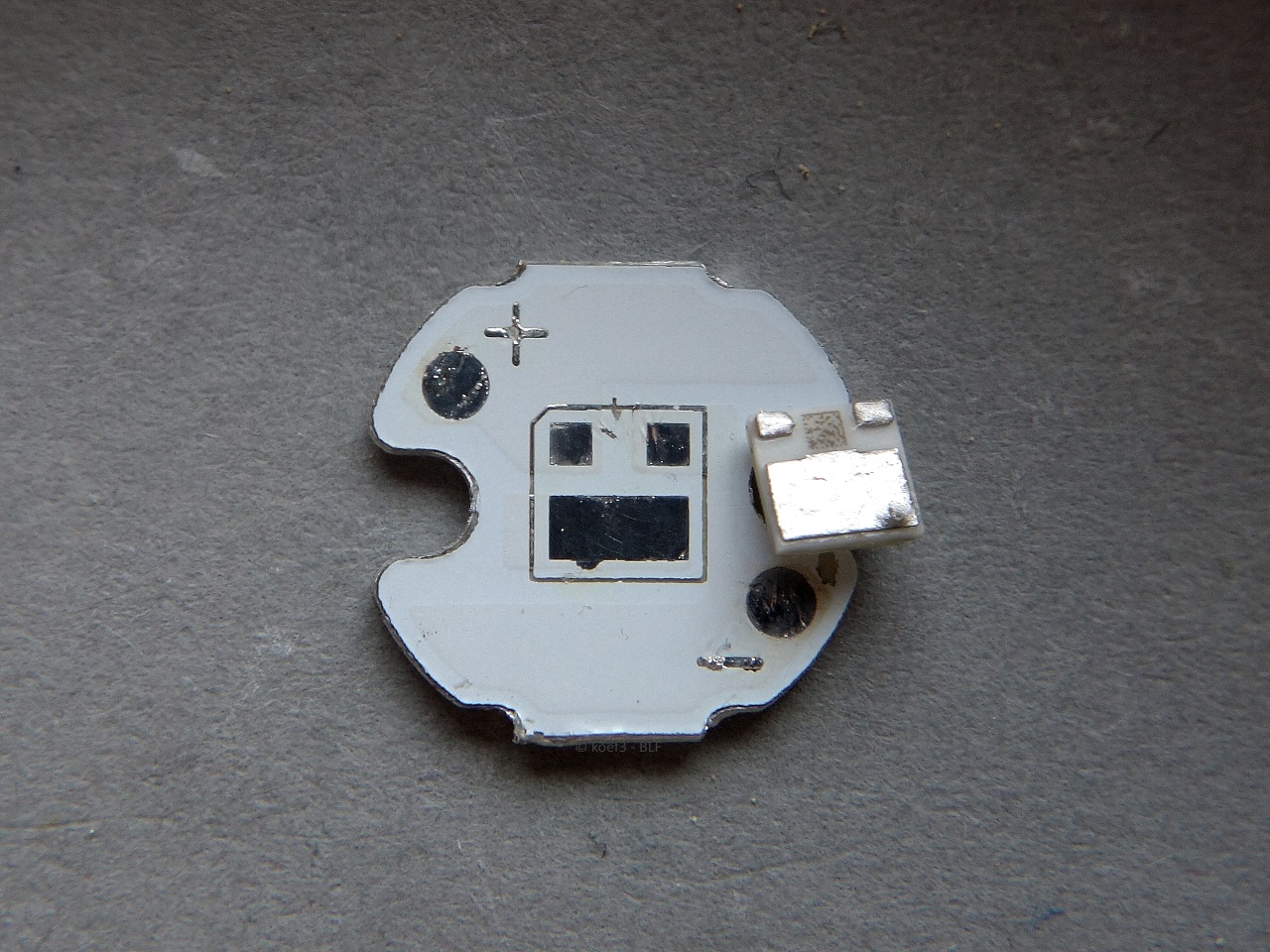
Comparison with XP-G2 (left, 3535 package, 3.5 x 3.5 mm):
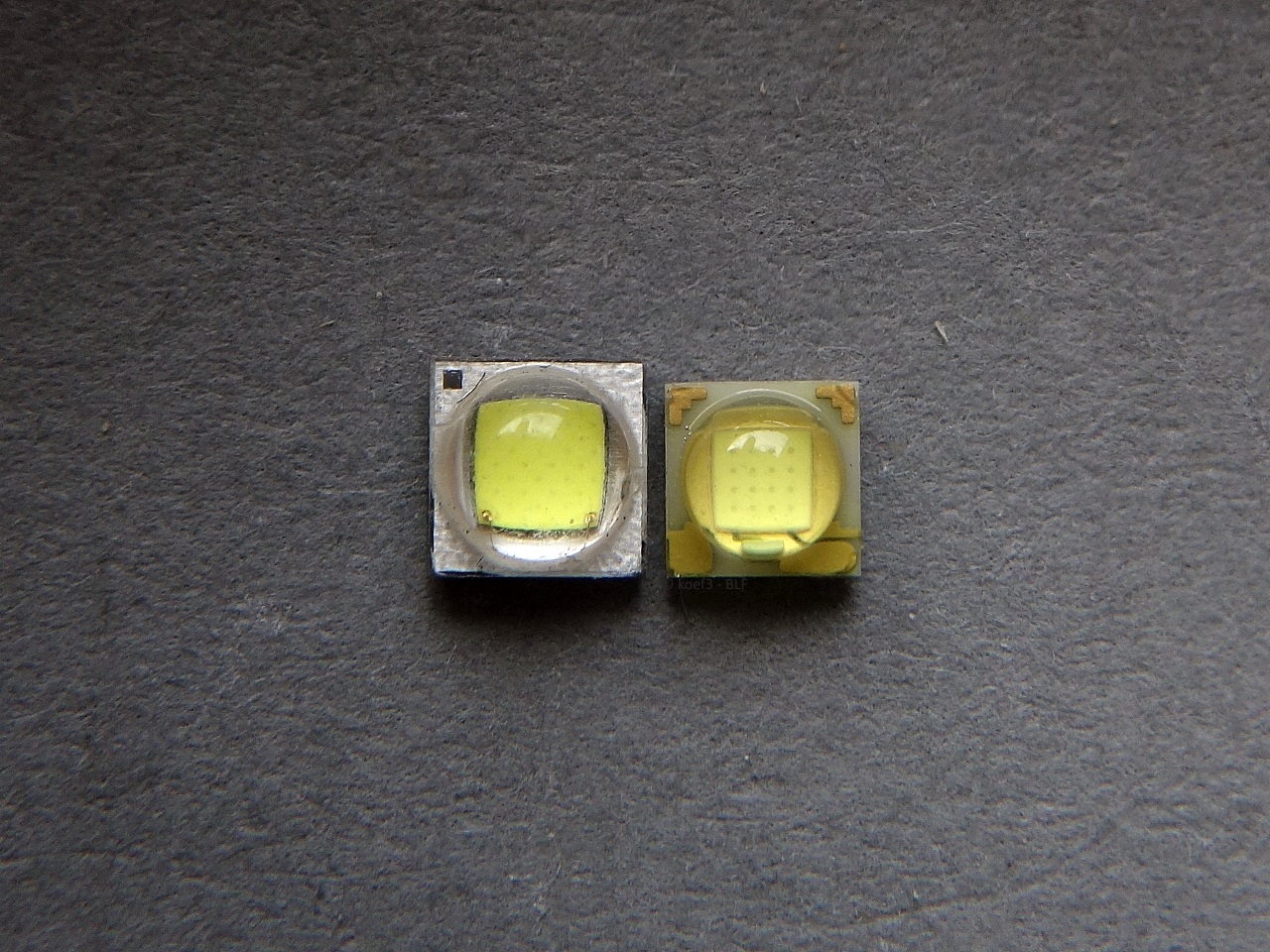
The die has visible dots on it’s surface which is also very similar to the earlier Luxeon Rebel.
And like that the Rebel Display can be easily dedomed even without heat oder razor blade. Simply pry the dome off the substrate with the finger nail. In my try I didn't noticed any problems with the phosphor layer on the die, even in cold state (see picture).

dedomed left, domed right
With dome the LES is 2.31 mm² in size, without dome 1.10 mm². So far I can see there are no LES sideways which could emit some light that increases the total LES.
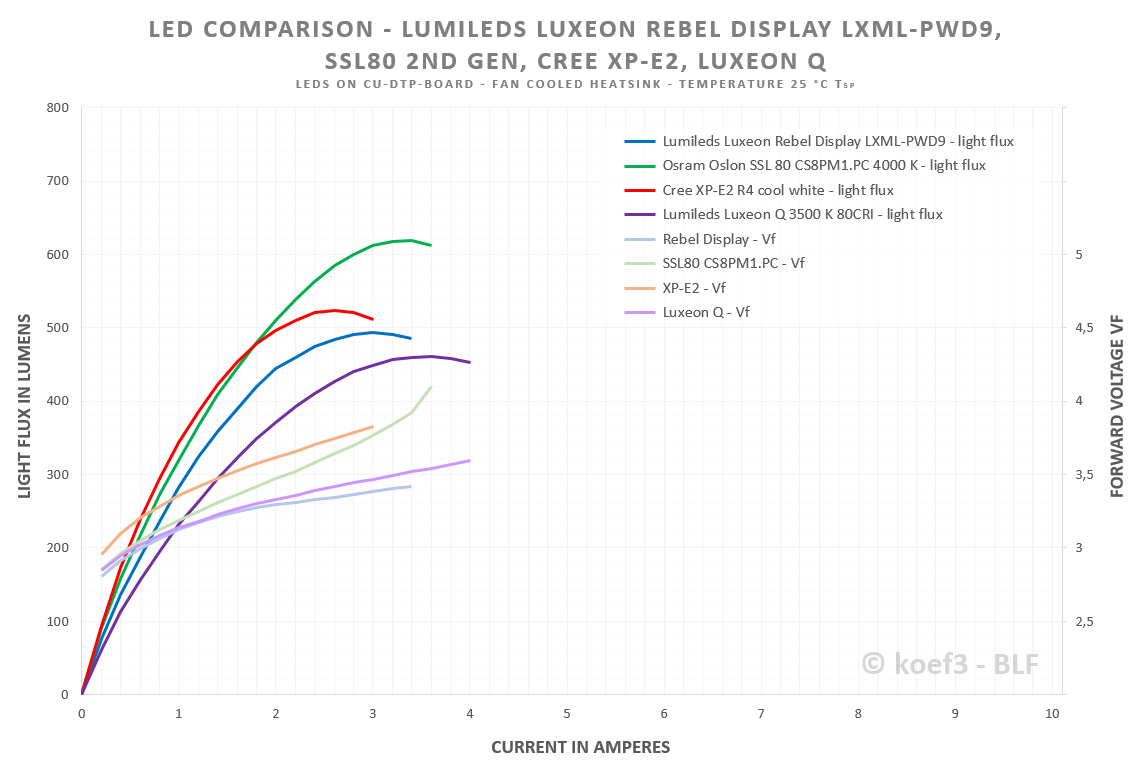
The Luxeon Rebel is not exactly the most efficient LED. Up to 2 – 2.6 A it is outperformed by almost all other emitters in the same power class. At lower current the XP-E2 has still the highest flux, but at a very high Vf.
The Vf of the Rebel Display is surprisingly low and stays below of all other emitters tested here. On the other hand the overall light flux of SSL80 is very nice, but it's Vf is really high, especially at highest current!
The flux maximum of the Rebel Display is reached at 3,000 mA (493.4 lm @ 3.38 V and 10.14 W). I would not run the emitter at more than 2,200 mA, the small gain in light flux which might be poossible doesn’t justify the reduced expected lifespan of the LED.
In dedomed state the light flux is approx 25 % lower, but there are no changes of the Vf.
The Rebel Display can be used in optics (reflectors) without problems. There are no annoying artifacts visible, also there are no miscolored areas around the spot.
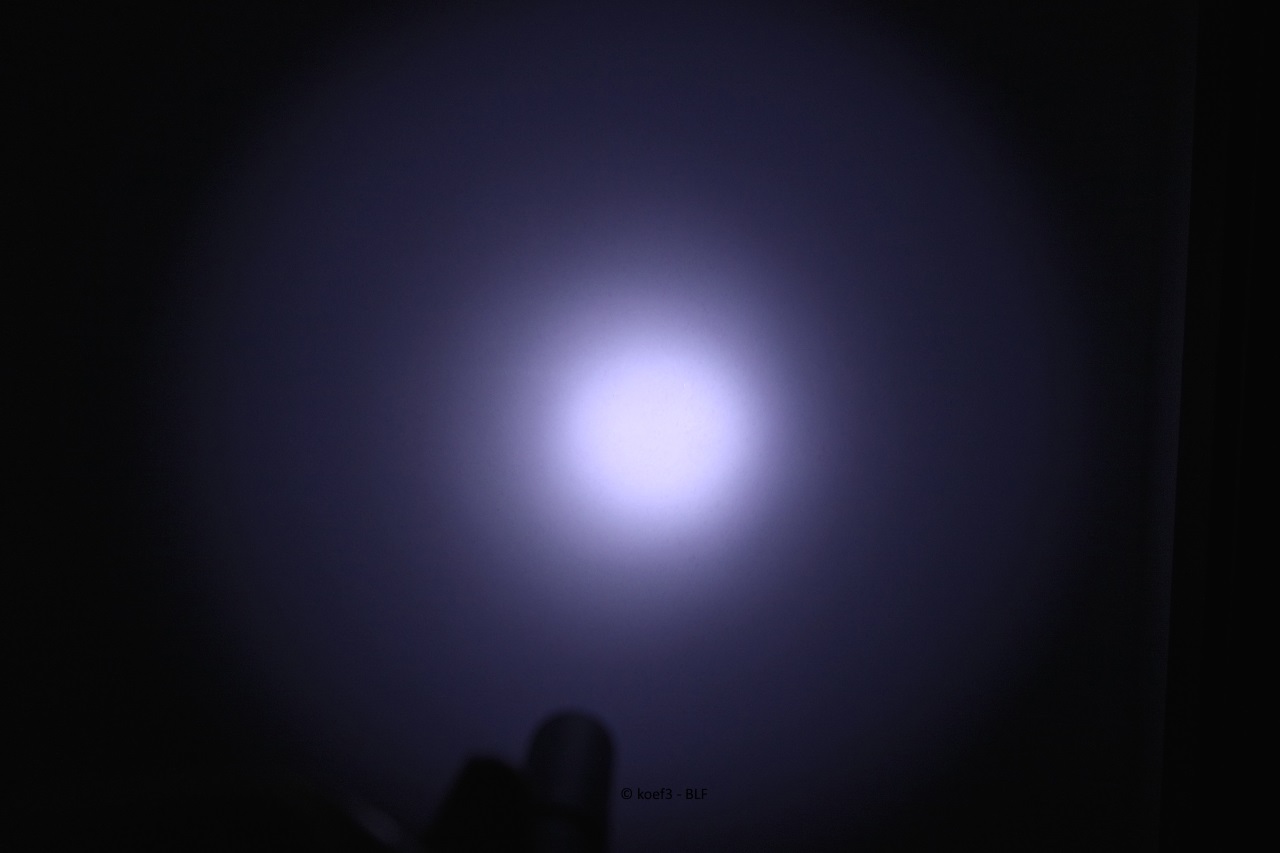
The light color is extremely blue, at over 10000 K CCT, I guess.
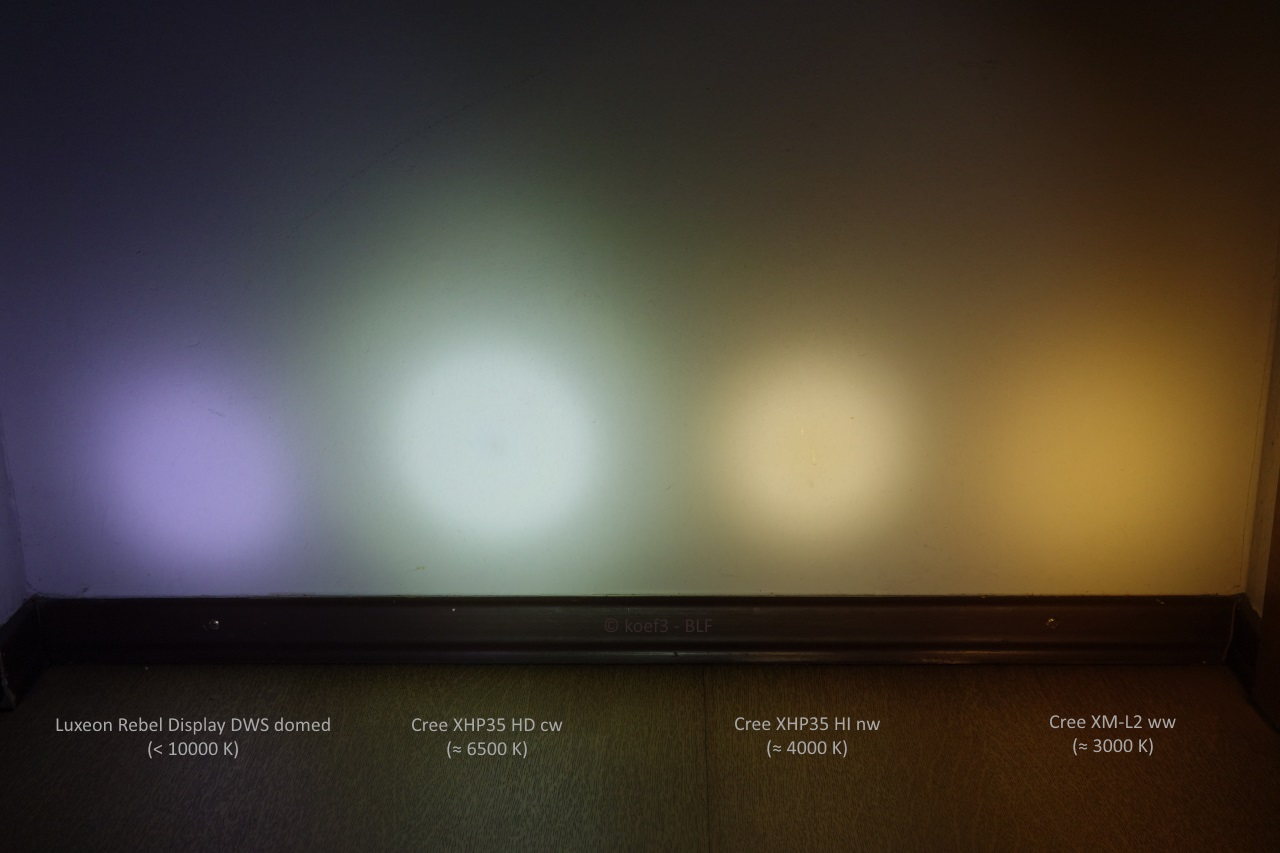
According to the official data, the CRI therefore should be very low, maybe 65 to 70.
In dedomed state the tint is not blue and warmer but some kind of yellow or green like we know from dedomed XP-G2 in some tints called ‚1D‘. In both states colors are not good reproduced as well which can be expected from a light source of this (low) color rendition class.
Conclusion
Today I would not recommend this LED anymore. The tint is horrible, the efficiency is still not really the best and the footprint is special so common LED boards cannot be used easily. Other well known LEDs like Osram SSL80 or XP-E2 should be used for any applications. They are also available in cool white options, but are much more efficient and have lower Vf.
The only positive I see is the very low price to date (especially at higher volumes) and (for it’s age) the fairly low forward voltage.
Thanks a lot for reading! 
Greetings, Dominik (aka BLF member koef3)
Mistakes, suggestions or offers / sponsoring of LEDs which I should test next are best sent via PM.